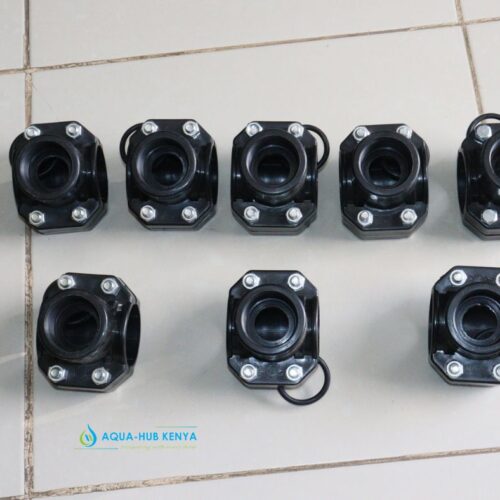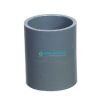Description
Elbow Fittings
An elbow fitting or elbow joint is a type of plumbing fitting that enables changing of direction of a mainline or a sub mainline pipe by 90 degrees.
It is commonly used to navigate around obstacles, make bends or change the direction of water in an irrigation system.
Specification of an Elbow Fitting
They come in various sizes and materials to suit various applications.
We have elbow fittings of diameter sizes 16 mm, 32 mm, 40 mm, 50 mm and 63 mm.
Elbow fittings are PVC and HDPE plastic materials.
They are effective to enhance joining of pipes in bends or evading obstacles in a line of pipes.
Types of Elbow fittings
Elbow fittings are available in various types depending on thread, degree or angle of bend and role of the elbow. They include:
- Male elbow
- Female elbow
- Reducing elbow
- Straight elbow
- 45° elbow
- 90° elbow
Fittings to make an Elbow Connection
- Elbow Fitting – The elbow fitting to use should be of an appropriate size and type based on specific pipe system requirements. Ensure the fitting material is compatible with fluid and connected pipes.
- Pipes and fittings – Necessary pipe sections and other fittings such as couplings required to connect the elbow pipe to an existing pipe fitting.
- Teflon tape or Pipe sealant – Teflon tape or glue sealant enhances a secure seal between thread connections.
- Wrenches or pliers – For tightening the connection.
Installing an Elbow fitting
- Cut the pipe sections to a desirable length ensuring they are clean ad free of rough edges.
- Apply glue sealant on the male threads of elbow fittings.
- Insert the male thread part of the elbow fitting into the female threaded part of the pipe.
- Using a wrench or pliers, twist the pipe fitting in a clockwise direction to connect onto the pipe.
- Connect appropriate fittings or pipe to the other end of the fitting. Again, use glue sealant for proper seal.
- Tighten all connection parts and joints.
- Test for any leaks. Open water connection to see any chance of leakages.
Applications of Elbow fittings
- Elbow fittings are applicable in industrial processes in flow lines of fluids, gases and steam.
- They are important in water supply systems to make bends or divert water.
- Elbows enhance joining and direction change in irrigation system pipe connection.





Reviews
There are no reviews yet.